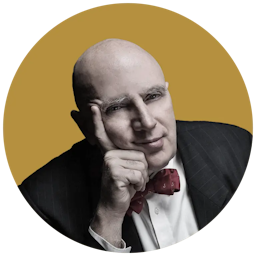A Downtown Sound Uptown
This article is from the archive of The New York Sun before the launch of its new website in 2022. The Sun has neither altered nor updated such articles but will seek to correct any errors, mis-categorizations or other problems introduced during transfer.

Composer and multireed player Ted Nash is associated with two important jazz institutions that are potentially in conflict: Jazz at Lincoln Center and the Jazz Composer’s Collective. Jazz at Lincoln Center’s initial purpose was to help Ellington and Morton receive the same respect as Mozart and Beethoven. The Jazz Composer’s Collective’s primary mandate is to encourage contemporary and more cutting edge musicians and writers. One celebrates the past, the other looks to the future. Yet Mr. Nash is a perfect player for both organizations.
This week, Mr. Nash and his group Odeon are appearing at Dizzy’s Club Coca-Cola. Odeon focuses less on different periods of jazz than on jazz’s relationship with other musics around the world. And it was a welcome surprise to see a Jazz at Lincoln Center facility hosting the same kind of unusual instrumentation – violin (Nathalie Bonin), accordion (Bill Schimmel), tuba (Clark Gayton, doubling on trombone) and drums (the versatile Matt Wilson) – used by down-towny types such as John Zorn and Dave Douglas. Mr. Nash led the group on four reeds.
The opening number was “Walk This Way,” which evoked a New Orleans second-line parade. Mr. Wilson’s snare drums and Mr. Gayton’s tuba made Odeon sound like a traditional brass band, even though Mr. Gayton was the only brassman. The second piece, “Tango Sierra,” was one of many that used a series of what I at first thought were cadenzas. As the set wore on, however, it became clear these were merely tempo changes – of the sort common to virtually every world music except for North American jazz.
“Tango Sierra,” as the title implies, made use of Argentine dance forms. But when Mr. Nash switched from bass clarinet to the standard B flat instrument for a section in a minor key, it sounded more like klezmer. “La Espada Della Noche” (also the title of Odeon’s forthcoming release on Palmetto Records) combined jazz with Spanish flamenco rhythms and was reminiscent of the work of Cuban composer Ernesto Lecuona. An elaborate jazz-latin arrangement of Claude Debussy’s clarinet concerto “Premiere Rhapsody” evoked yet another culture and musical tradition.
In all these pieces, Odeon walked a thin line between solos – players playing by themselves – and improvisations. When Mr. Schimmel soloed, it sounded like he was improvising, even if he was never quite playing “jazz accordion” – i.e., like Joe Mooney or Art Van Damme. The same was true of Ms. Bonin’s violin solos – this was definitely not “hot fiddle.”
The man most responsible for holding it all together was Mr. Wilson. On some songs, he replicated castanets and hard-soled shoes. And he is one of the few drummers capable of sustaining two types of rhythmic feel simultaneously. The Jazz Composer’s Collective’s fourth annual festival at the Jazz Standard opens with Odeon on April 13, and I can’t wait.
***
On Tuesday night, before heading down to Dizzy’s, I caught the first half of an intriguing concert at Symphony Space. This was “Italian Women In Jazz,” produced by Enzo Capua, a tireless advocate of all things female, Italian, and jazzy. Pianist and composer Patrizia Scascitelli played, as did the fine, New York based tenor saxophonist Ada Rovatti. I had to miss singer-songwriter Chiara Civello and one group I really wanted to see, Elle in Tones, a female vocal quartet that specializes in the songs of Duke Ellington.
On Wednesday, I turned my attention Italian women to Jewish men. The Jewish Heritage Museum is celebrating the 10th anniversary of John Zorn’s Tzadik label with a series of Wednesday concerts, the third of which featured my two favorite Tzadik artists, trumpeter Steven Bernstein and tenor saxist Paul Shapiro. Mr. Shapiro’s sextet, Midnight Minyan, has grown much tighter and stronger since I last heard them in 2003.
I was especially impressed by “Lester Young’s Misheberakh,” which illustrates a comparison Gary Giddins once made, in which he said a Prez solo reminded him of worshippers davening in a synagogue. (Interestingly, while most of Young’s most famous followers – Stan Getz, Zoot Sims, Al Cohn – were Jewish, Mr. Shapiro himself plays with a big tone more reminiscent of Illinois Jacquet.) But I was disappointed that Mr. Bernstein didn’t bring out my favorite of his bands, Diaspora Soul.
Instead he presented a new group, one roughly inspired by the Harlem Hamfats, a popular Chicago-based unit of the 1930s that was a forerunner of jump bands and rhythm-and-blues. Mr. Bernstein calls it “Hamfats 3000,” and it uses a front line of himself on trumpet, the ace clarinetist Marty Ehrlich, bassist Brad Jones, and drummer Anton Fier. Guitarist Liberty Ellman and Charles Burnham on mandolin give the group a 1930s string-band sound.
Mr. Bernstein is a tireless composer, instrumentalist, and bandleader who never fails to be interesting, and his new compositions continue to intrigue. This early performance by the new group sounded somewhat disjointed; in particular, it wasn’t clear what the role of the mandolin was supposed to be. But I have no doubt that Hamfats (a distinctly non-kosher kind of Jewish band) will coalesce into another great Bernstein unit.
Ted Nash and Odeon until March 27 (Jazz at Lincoln Center, 212-258-9550).

